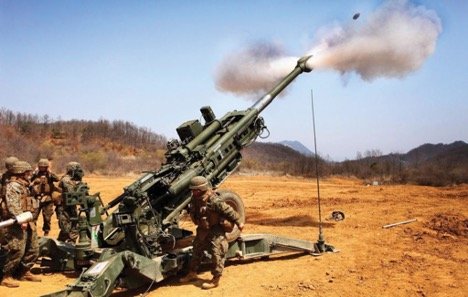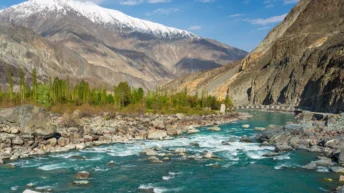
A battery of field Artillery is worth a thousand muskets – General William Tecumseh Sherman
Every year the 28th of September is celebrated as Gunners Day. Regiment of Artillery -the second-largest arm of the Indian Army — one-sixth of its total strength of the Indian Army, traces its origin to this day – almost 200 years back in 1827.
As Field Marshal Montgomery rightly said, “The harder the fighting and the longer the war, the more the infantry, and in fact all the arms, lean on the gunners.”
The Regiment of Artillery’s motto is ‘Sarvatra Izzat-O-Iqbal’, which means ‘everywhere with honour and glory’.
The gunners and their gun crew also called ‘topchis’ take pride, and literally worship their guns, cannons, mortars, missiles, and rocket launchers. There are a number of customs and traditions in the Regiment of Artillery, which revolve around their guns and mortars. For instance, the gunners salute their guns before the start of work in the morning and at the end of the day. This is a way of showing respect to the gun and pledging to protect and preserve it with their life. Likewise, whenever a gun passes by in front of a quarter guard, it is given a “General Salute”. These traditions are rigidly followed by the gunners in the regiment of Artillery.
Apart from these, there is a tradition of gun salute where a specified number of guns are fired on ceremonial occasions as a military honour and a mark of respect to heads of state. There is also a practice of a gun salute in the event of military and state funerals, depending on the rank and status of the person to be honoured. Likewise, there is an age-old tradition of carrying the coffin of fallen soldiers and high-ranking political leaders to their final resting place in state funerals on Gun carriages.
Artillery has four main roles to perform:
· Create confusion in the enemy camp with a highly accurate and intensive artillery barrage and suppress the enemy fire
· Strike the enemy targets hard and destroy its supply chain and communication links
· Break the enemy’s will to fight and make them keep their head down and hide to save their skin
· Providing fire support to own troops in offensive or defensive roles
Artillery is by far a cheaper and more economical option than precision-guided weapons to destroy the enemy’s firepower, mobility, as well as the human will to fight and win.
The recent conflict between Ukraine and Russia is a living example of how Artillery can change the complexion of any war and completely dominate the enemy’s command, control and communication ability. Both Russia and Ukraine are learned to have tactically deployed their artillery to break up the enemy’s attack and neutralize its gun positions.
Artillery Wins Wars
Artillery is the ultimate battle-winning factor on any battlefield and it’s next to conceive of any victory in war without artillery fire support.
Modern-day artillery guns or howitzers can provide long-distance fire and literally replicate the role played by a combat aircraft to deliver lethal bombs at enemy targets – 20 to 40 km away or even more. One of the most recent examples is how the 155mm Bofor guns helped soften up the fiercely defended enemy targets and inflicted heavy casualties on the Pakistani intruders thus clearing the way for successful infantry assaults during Op Vijay in Kargil. It took a herculean effort to carry and deploy the 155mm Bofors howitzers and multi-barrel rocket launchers (MBRLs) but the indomitable spirit of Indian Gunners and round-the-clock intensive firing by the artillery batteries paved the way for the Indian victory in the Kargil, Dras, Batalik and Mushkoh sector.
Over a period of 2 months, 3 weeks and 2 days of the Kargil war which lasted from 3 May – 26 July 1999, the Indian Artillery fired over 250,000 shells, bombs and rockets. This amounts to about 5,000 Artillery shells, mortar bombs and rockets being fired daily by over 300 guns, mortars and MBRLs. Such high rates of fire over long periods haven’t been seen anywhere in the world since World War II. To pay tribute to the supreme sacrifice of the Gunners in “Operation Vijay” Point 5140 at Dras, in the Kargil sector has been christened as “Gun Hill”.
No wonder gun duels are even today a common feature in the mountain ranges on the Line of Control (LoC) in J&K.
Artillery can be towed and mounted or self-propelled. Towed guns are designed to be pulled by gun carriages or mounted on other vehicles. The towed guns are good for static battle – where they can stand and fire from a fixed place for days together. However, this can prove to be their greatest drawback as they cannot be easily shifted in sand dunes or rugged off-road terrain. In contrast, self-propelled artillery guns can move from one firing position to another on their own. Towed artillery is generally lighter, but requires a separate vehicle to tow them while self-propelled artillery can quickly change its firing position giving rise to an artillery tactic called shoot-and-scoot where a gun fires at a target and swiftly moves away to a new location to avoid being detected by gun location radars and targeted by counter-battery fire.
Because of their simplicity, mobility and lower cost the mounted artillery was much more than ‘poor man’s choice and an increasingly attractive option. The Indian army urgently needs self-propelled guns to soften hostile targets in the plains and deserts.
The introduction of artificial intelligence, satellite communication, UAVs, and networked electronic systems over the last few decades has highlighted their role as a decisive arm on the battlefield and increased the effectiveness of artillery in all types of terrains. This has had an impact on the performance and range of field artillery. For instance, the length and calibre of the gun barrels have increased considerably. Modern field guns like the Bofors FH-77Bs today have a range of anywhere close to 30 – 40 km.
But this is something that we need to learn and remember that the outcome in modern warfare requires teamwork and complete battlefield management – where range alone is not the only decisive factor. To win a war you also need an effective and credible means of target acquisition and fire control to get the best results from a long-range field gun. The Indian army despite its superior field guns was almost blind in the absence of weapon locating radars (WLR) while Pakistan could fire more accurately drop bombs and destroy our gun positions with the help of its American AN/TPQ-36 Firefinder radars despite it relatively smaller guns during Operation ‘Vijay’ in Kargil in 1999. Though India had a limited number of British Cymbeline mortar-detecting radars, they were not very useful for detecting shells from a high angle. As a result, almost 80% of the Indian casualties in the war resulted from highly accurate Pakistan artillery fire while it was virtually impossible for the Indian army to physically ascertain the exact location of Pakistani guns deployed beyond the Line of Control.
It is reliably learnt that the Indian army projected the need for fire-finding radars in the 1980s but the matter kept hanging fire for almost two decades. And it was already too late before the Indians realised their mistake. These lacklustre efforts to obtain a WLR system were severely criticised by the Parliamentary Standing Committee on Defence, which said “The Kargil conflict of 1999 has been referred to as a wake-up call. The Committee hope that the Government has drawn proper lessons from this conflict. The view of the Government that there should be a long-term financial plan is welcome. It is expected that the proposed long-term financial planning would properly take care of the defence needs and preparedness.”
“The Committee find on the basis of the facts brought before it that the Ministry of Defence has not shown any sense of seriousness in acquiring this item. The enquiry in respect of this item had admittedly started in 1989 and even after a decade the Indian Army has not been able to acquire it. Our adversary is in possession of the weapon locating radar and it was used by it during the Kargil conflict to destroy our gun positions. The Committee is seriously concerned by the degree of seeming casualness shown by the Defence Ministry in this regard”, the Parliamentary Committee added.
“The Committee desire that the Government should take immediate steps to equip the Army with this Radar,” it recommended.
Immediately after the Kargil fiasco, India started urgently looking for weapon-locating radars which help to locate the point of its origin by plotting the trajectory of an incoming artillery shell. This automatically-generated data makes it possible to respond within seconds and detect, track and destroy enemy gun position even before a missile hits the target.
The Indian artillery today badly needs Battle Field Surveillance Radar, Weapon Locating Radar and Thermal Integrated Observation Equipment. The Russians are believed to have offered Zoopark-1, their artillery tracking radar which can track an enemy shell to predict its flight path and trajectory from the position it was fired to the place it is going to land thus providing the coordinates to suppress the enemy gun position in just eight seconds.






Add comment